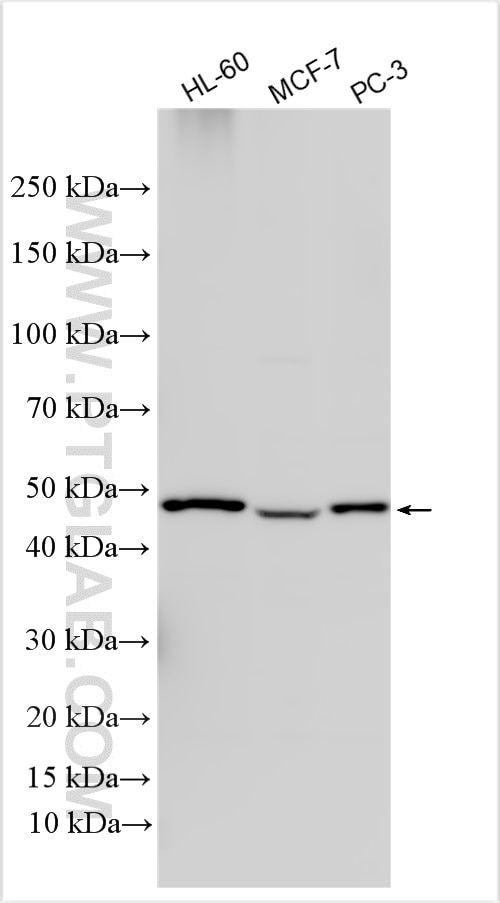Tested Applications
| Positive WB detected in | HL-60 cells, MCF-7 cells, PC-3 cells |
Recommended dilution
| Application | Dilution |
|---|---|
| Western Blot (WB) | WB : 1:500-1:2000 |
| It is recommended that this reagent should be titrated in each testing system to obtain optimal results. | |
| Sample-dependent, Check data in validation data gallery. | |
Product Information
20297-1-AP targets P2RY2 in WB, ELISA applications and shows reactivity with human samples.
| Tested Reactivity | human |
| Host / Isotype | Rabbit / IgG |
| Class | Polyclonal |
| Type | Antibody |
| Immunogen | P2RY2 fusion protein Ag14107 Predict reactive species |
| Full Name | purinergic receptor P2Y, G-protein coupled, 2 |
| Calculated Molecular Weight | 377 aa, 42 kDa |
| Observed Molecular Weight | 45 kDa |
| GenBank Accession Number | BC012104 |
| Gene Symbol | P2RY2 |
| Gene ID (NCBI) | 5029 |
| RRID | AB_3669332 |
| Conjugate | Unconjugated |
| Form | Liquid |
| Purification Method | Antigen affinity purification |
| UNIPROT ID | P41231 |
| Storage Buffer | PBS with 0.02% sodium azide and 50% glycerol , pH 7.3 |
| Storage Conditions | Store at -20°C. Stable for one year after shipment. Aliquoting is unnecessary for -20oC storage. 20ul sizes contain 0.1% BSA. |
Background Information
P2RY2, also named P2RU1, P2U1, and P2Y2, belongs to the G-protein coupled receptor 1 family. It is a receptor for ATP and UTP coupled to G-proteins that activate a phosphatidylinositol-calcium second messenger system. Extracellular ATP then acts on purinergic receptors, including P2RY2, to activate proline-rich tyrosine kinase 2 (Pyk2) kinase and transient plasma membrane depolarization.
Protocols
| Product Specific Protocols | |
|---|---|
| WB protocol for P2RY2 antibody 20297-1-AP | Download protocol |
| Standard Protocols | |
|---|---|
| Click here to view our Standard Protocols |



